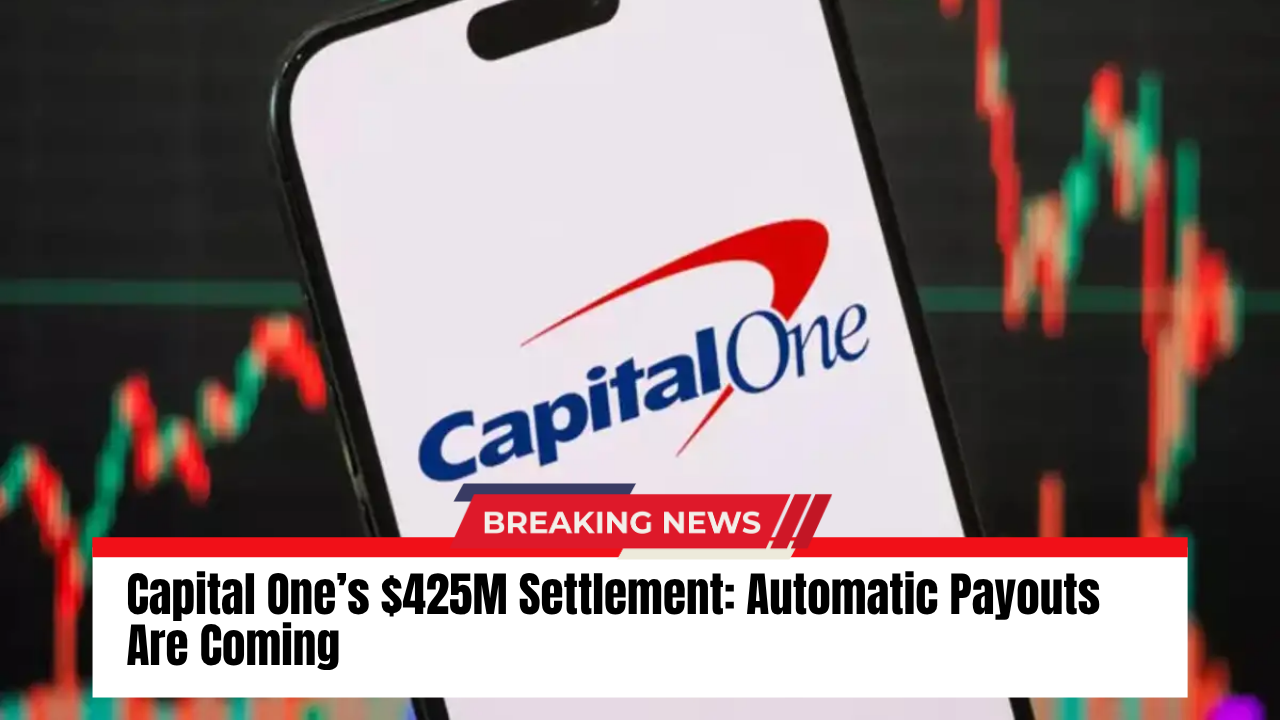Capital One has agreed to a massive $425 million class-action settlement that will send money directly to nearly 10 million customers – without requiring most people to file a claim form.
The deal, approved in the U.S. District Court for the Eastern District of Virginia, ties together two major issues: the 2019 data breach that exposed sensitive customer information and years of allegedly unfair interest treatment for some 360 Savings customers.
No public claims portal is open right now, and for most people, there’s nothing to “apply” for. The settlement administrator will use Capital One’s records to figure out who is owed money and how much.
What this settlement actually covers
This agreement grew out of two long-running problems that collided into one giant case.
1. The 2019 data breach
In 2019, Capital One’s cloud systems were hacked, exposing personal data from over 100 million U.S. and Canadian customers and applicants. The compromised information included:
- Names and addresses
- Credit scores
- Application details and other account-related data
Unlike passwords, this type of identity data can’t simply be changed, which is why regulators have treated the breach so seriously. The Federal Trade Commission has repeatedly warned that stolen identity information can surface years later, and still recommends that victims monitor their reports and use tools like freezes and fraud alerts.
2. The 360 Savings interest-rate gap
The second issue centers on how Capital One handled interest rates for long-time savers.
From roughly 2019 through 2025, many legacy 360 Savings customers reportedly earned around 0.3%, while newer customers using the 360 Performance Savings product enjoyed rates closer to 4.3% at the peak of the recent rate cycle.
The lawsuit argued that:
- Existing savers were not clearly told that a much higher-yield account was available
- The differences and upgrades were not explained in a way an average customer would reasonably notice
That pushed the dispute into the territory of possible unfair or deceptive practices. The Consumer Financial Protection Bureau has long flagged inadequate disclosure around deposit products as a UDAAP (unfair, deceptive, or abusive acts or practices) risk.
Together, the breach and the rate issue shaped the settlement: compensation for extra risk and harm on one side, and for missed yield and poor communication on the other.
Who gets paid and how it works
According to court filings, eligible customers will be paid automatically. The settlement administrator will use Capital One’s internal records to:
- Confirm eligibility
- Calculate each customer’s share
- Decide whether the payout posts as an account credit or goes out as a separate payment
You don’t need to chase random “claim links” to get included.
Expected payout paths
| Group | How you’re paid | Extra details |
|---|---|---|
| Current Capital One customers (eligible) | Credit directly to your Capital One account | Amount based on account history and the administrator’s formula |
| Former customers who closed accounts before Nov 2025 (eligible) | Mailed check or direct deposit | An extra 15% bonus added to their calculated share |
| Customers with outdated or unclear contact info | May need extra verification | Watch for official notices by email or regular mail |
If your contact information is old or incomplete, you may have to confirm details before money can be released.
Key dates and the payment timeline
The settlement follows the usual class-action rhythm: notice, objections, final approval, then payments.
Important timing markers:
- October 2, 2025 – Key verification and data cutoff deadline referenced in settlement materials
- November 6, 2025 – Final approval granted by the court
- Early 2026 – Payments expected to begin reaching customers
If you receive a notice, treat every link with caution. Instead of clicking immediately, you can:
- Type Capital One’s web address directly into your browser and look for settlement updates
- Cross-check any case information against the federal court docket for the Eastern District of Virginia via the judiciary’s PACER system at uscourts.gov
If you suddenly see a random “claim portal” asking for your full Social Security number or banking details and it’s not clearly tied to Capital One or the court, assume phishing and back out.
What this means for banking and consumers
This settlement isn’t just about money changing hands; it’s a warning shot to the entire banking industry.
For banks, the message is straightforward:
- Cloud security failures can be enormously expensive
- Failing to clearly explain better products or higher-yield options to existing customers can be treated as deceptive, not just annoying
- “Set it and forget it” product design may come back later as a legal liability
For customers, there’s a big takeaway too: loyalty doesn’t automatically equal the best deal. Often, the account type matters more than the brand name on your app or card.
When interest rates move, it’s worth:
- Checking what rate your specific account earns
- Comparing it against alternatives at the same bank
- Moving your savings if you’re stuck in a low-yield legacy product
Practical steps you should take now
Even though most payouts will be automatic, there are a few smart moves you can make to protect yourself and avoid delays.
- Check if you’re likely eligible
If you held a 360 Savings or related Capital One account between 2019 and 2025, there’s a good chance you fall into the class. - Update and confirm your contact details
Make sure Capital One has your current email, phone number, and mailing address so notices and payments don’t bounce. - Ignore unofficial settlement websites
Only trust information coming directly from:- CapitalOne.com
- ftc.gov
- consumerfinance.gov
- uscourts.gov
- Monitor your credit and identity
Use AnnualCreditReport.com to pull free credit reports and consider a credit freeze if you’re concerned about the 2019 breach fallout. - Watch for official communication
Capital One is expected to send email or mailed notices before major milestones. Always verify in your account or through official sites rather than clicking on unexpected links.
How regulators are likely viewing this
Behind the legal language, regulators are sending a few clear signals:
- Cloud security is mandatory, not optional
Financial institutions are expected to build “least privilege” architectures, log access, patch quickly, and prove they’re doing it. - Disclosure beats silence
When there’s a clearly better account for the same type of customer, just hoping people don’t notice can look like deception. - Automation must be transparent
Automatic payouts sound customer-friendly, but only if the underlying math and communications are accurate, auditable, and clearly explained.
In short, transparency and fair treatment are being priced into how banks operate. For customers, that’s a trend worth watching.



